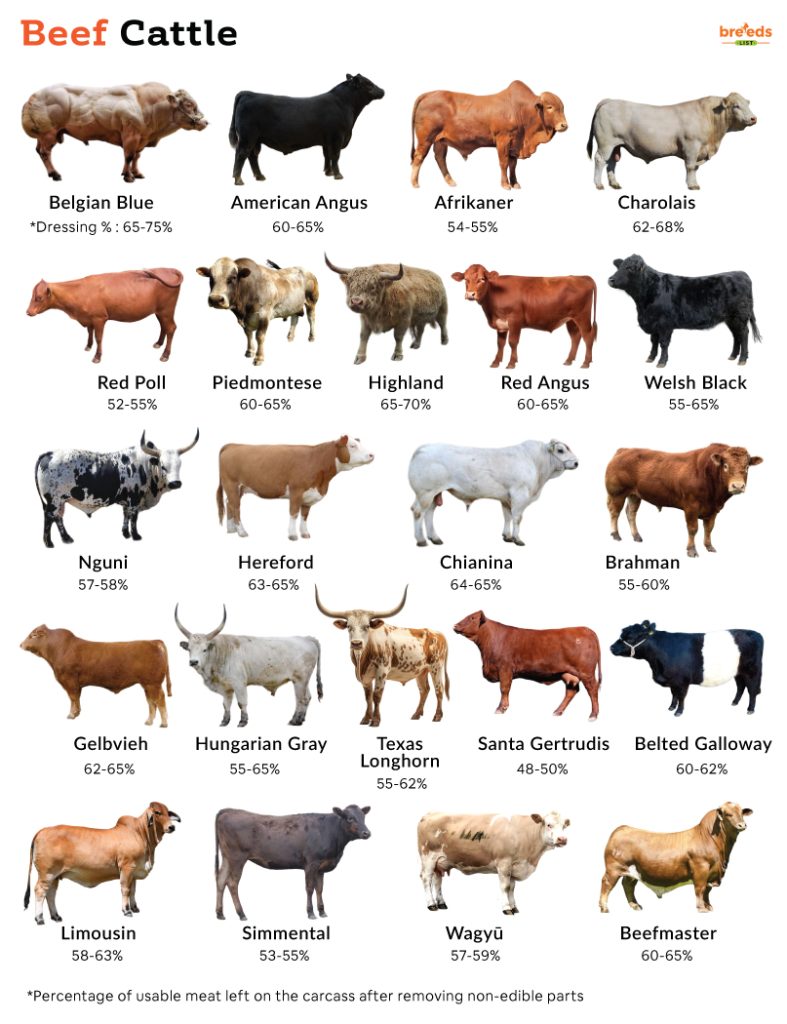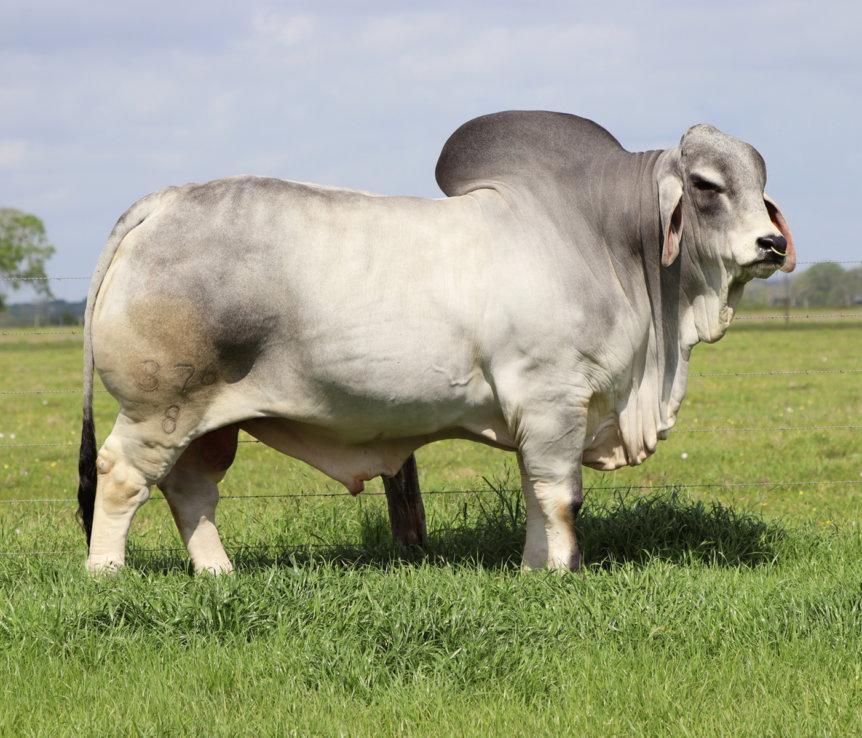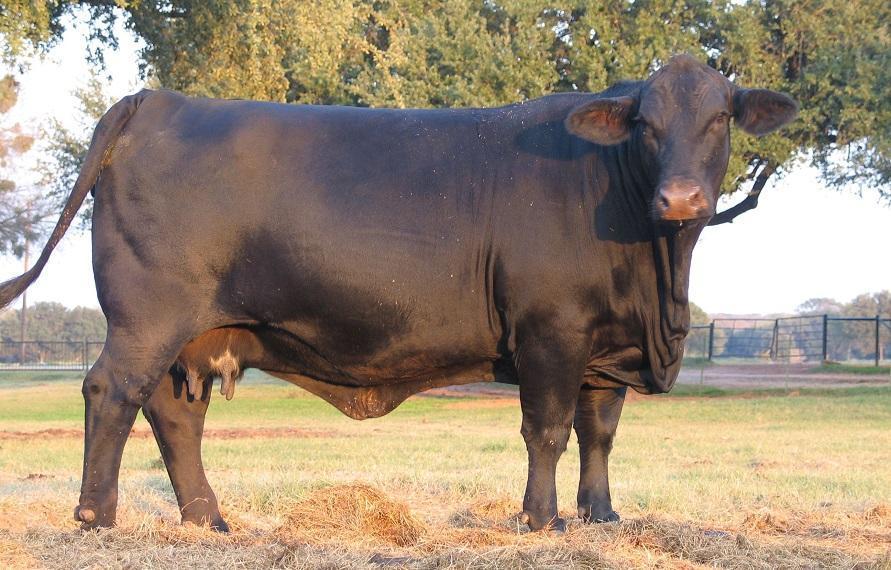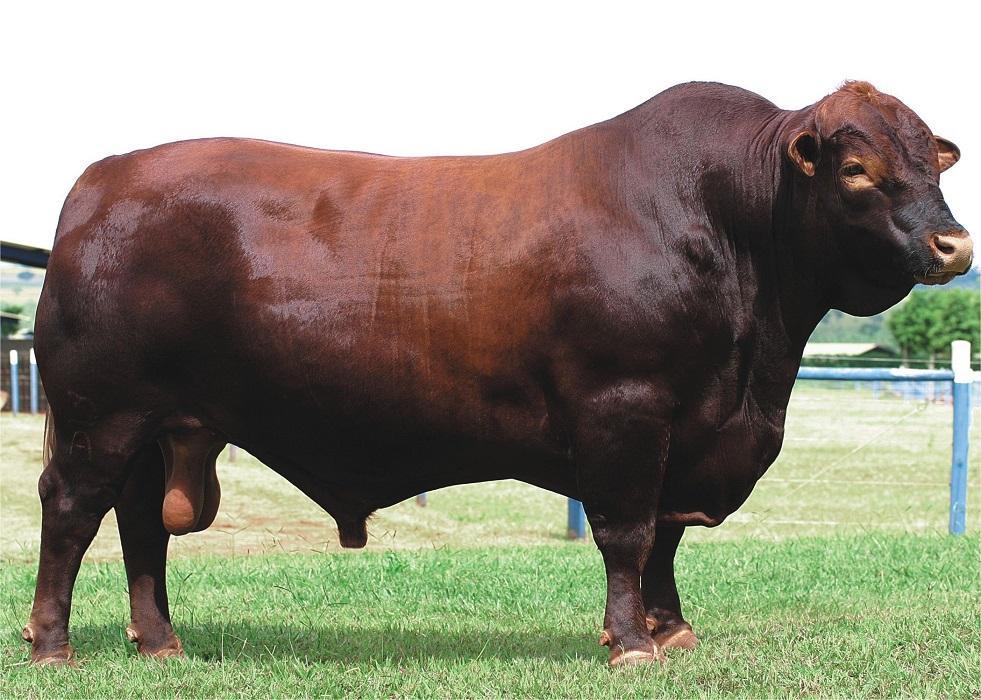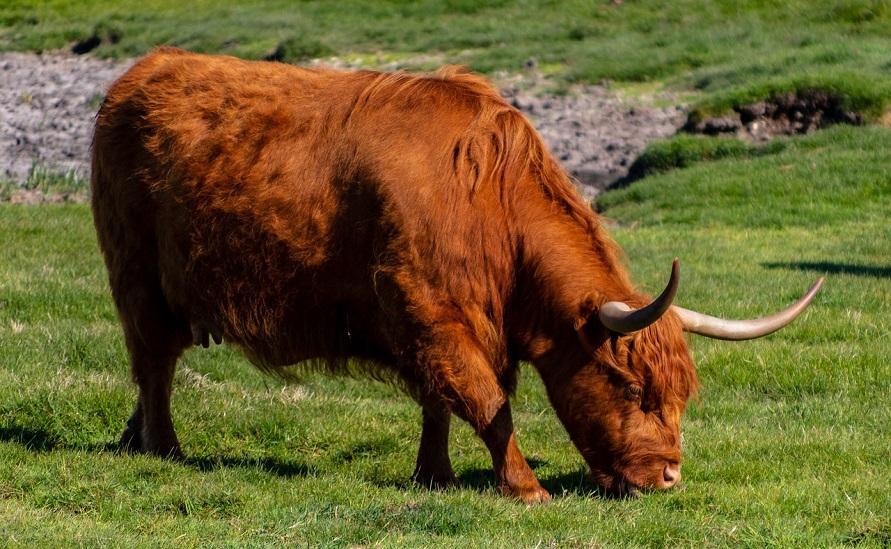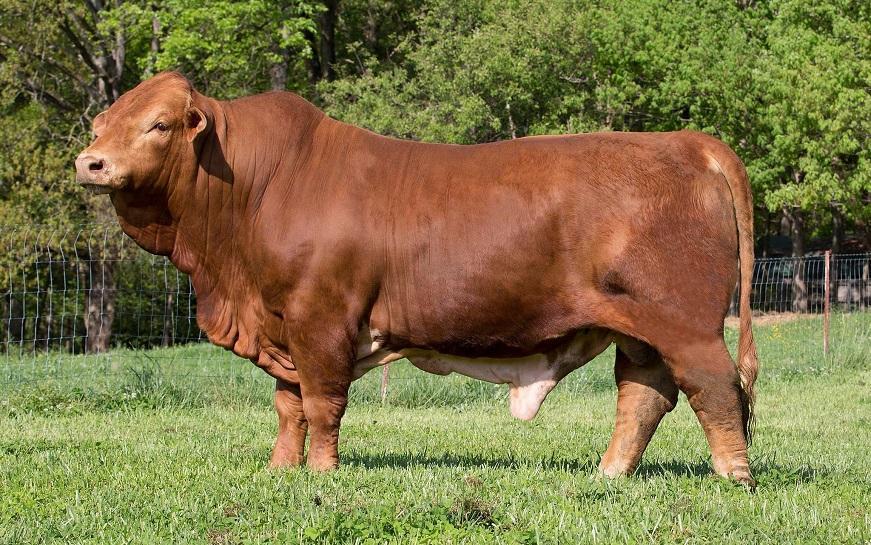Beef Cattle
Beef cattle are developed mainly for meat production and bred for swift weight gain and high muscle mass. This approach is distinct from that of dairy cattle, which prioritize udder development for milk yield. Most contemporary beef cattle breeds can trace their lineage back to Europe, particularly the British Isles, with significant roots in England and Scotland.
As of 2024, the United States dominates global beef production, contributing 20% of the total beef worldwide. Other major beef producers include Brazil (around 17%), China (around 13%), and the entire European Union (about 11%).
What Makes a Cattle Breed Good For Beef
- High Dressing Percentage – Beef breeds have well-developed muscles, particularly in areas such as the hindquarters, loin, and shoulders. This contributes to higher meat yields and better meat quality. The parameter used to determine muscling is its dressing percentage. The term refers to the percentage of the live animal’s weight and what remains after it has been slaughtered and the internal organs, head, hide, and other non-edible parts have been removed. Most beef cattle have a dressing percentage of around 60-65%.
- Frame Score – The frame score for a cattle breed is a numerical score assigned to a single specimen. It denotes the cow’s growth pattern and potential size upon maturing and usually ranges from 2 to 9.
- Low Feed Conversion Efficiency – Feed Conversion Ratio (FCR) refers to the amount of feed the breed requires to gain a unit weight. It’s typically calculated as the ratio of the amount of feed consumed by the animal over a specified period to the weight gained during that time. Most beef cattle have an FCR value between 4.5 and 7.5. This means they convert 4.5-7.5 units (e.g. lbs) of feed to 1 unit of body mass.
- Rapid Growth Rate – Good beef breeds quickly gain weight from birth. On average, most cattle raised for their meat gain about 2.5 lbs/day. However, some breeds gain weight quicker, like the Chianina, which grows about 4.4 lbs per day.
- Docile Temperament – Docile breeds are generally easier to handle and manage, reducing the risk of injuries to the handler and the animal. Thanks to intensive breeding, docility is a common trait in most beef breeds, though some, like the Charolais, are a bit unpredictable.
- Adaptability – Cattle breeds that thrive in various environments are better for beef production. This includes factors such as disease resistance, tolerance to heat or cold, and ability to graze on different types of forage.
Best Types of Meat Cattle Breeds
Here are some of the best cattle breeds reared for their meat, selected based on their weight, dressing percentage, and frame score.
| Breed | Average Weight (in lbs) | Dressing Percentage | Average Breed Frame Score |
|---|---|---|---|
| Beefmaster | 1760-2700 | 60-65% | 4-6 |
| Belgian Blue | 1700-2700 | 65-75% | 6-8 |
| Charolais | 1250-2600 | 62-68% | 6-8 |
| Welsh Black | 1100-2500 | 55-65% | 3-6 |
| Hereford | 1500-2400 | 63-65% | 3-6 |
| Chianina | 1800-2200 | 64-65% | 7-9 |
| Gelbvieh | 1600-2200 | 62-65% | 5-7 |
| Limousin | 1400-2200 | 58-63% | 5-7 |
| Santa Gertrudis | 1350-2200 | 48-50% | 5-7 |
| Piedmontese | 1300-2200 | 60-65% | 5-7 |
| Afrikaner | 1150-2200 | 54-55% | 4-6 |
| Brahman | 1000-2200 | 55-60% | 5-7 |
| Belted Galloway | 1100-2000 | 60-62% | 3-5 |
| Highland | 900-2000 | 65-70% | 3-5 |
| Wagyu | 1600-1800 | 57-59% | 4-6 |
| Red Poll | 1200-1800 | 52-55% | 4-6 |
| Red Angus | 1100-1800 | 60-65% | 3-6 |
| Hungarian Gray | 1100-1800 | 55-65% | – |
| American Angus | 1400-1650 | 60-65% | 3-6 |
| Nguni | 700-1550 | 57-58% | 3-6 |
| Simmental | 1100-1500 | 53-55% | 6-8 |
| Texas Longhorn | 900-1500 | 55-62% | 3-5 |
More Beef-producing Cattle Breeds
- Adaptaur
- Aberdeen Angus
- Australian Braford
- Australian Brangus
- Australian Charbray
- Barzona
- Beefalo
- Beef Shorthorn
- Belmont Red
- Black Hereford
- Blonde d’Aquitaine
- Bonsmara
- Boran
- Brangus
- British White
- Caracu
- Corriente
- Crioulo Lageano
- Dexter
- Droughtmaster
- English Longhorn
- Florida Cracker
- Galloway
- Gascon
- Hanwoo
- Hérens
- Irish Moiled
- Jabres
- Japanese Shorthorn
- Lincoln Red
- Lowline
- Luing
- Madurese
- Maine-Anjou
- Mocho Nacional
- Murray Grey
- Nelore
- North Devon
- Pineywoods
- Pinzgauer
- Romagnola
- Romosinuano
- Rubia Gallega
- Salers
- Sibi Bhagnari
- Square Meater
- Stabiliser
- Sussex
- Tabapuan
- Tajima
- Watusi
- White Park
- Żubroń
It is worth noting that modern beef cattle rearing practices have been criticized for the wasteful use of land and water, the environmental impact caused by raising so many methane-producing animals over larger areas, and the deforestation practices undergone to accommodate them.
FAQs
Veal is typically sourced from young male calves no older than 16-18 weeks, although female calves not destined for dairy production are also sometimes used. Beef, on the other hand, generally comes from cattle aged between 1 and 2 years. Additionally, older cows that are no longer capable of calving are also butchered, providing tougher meat due to an excess of muscle growth.
The amount of space designated for a single beef cattle varies primarily with the management system in place. In feedlots, their living space is restricted to approximately 100-250 square feet. Conversely, under pastoral care, a single cattle can have a territory of up to 2 acres.

